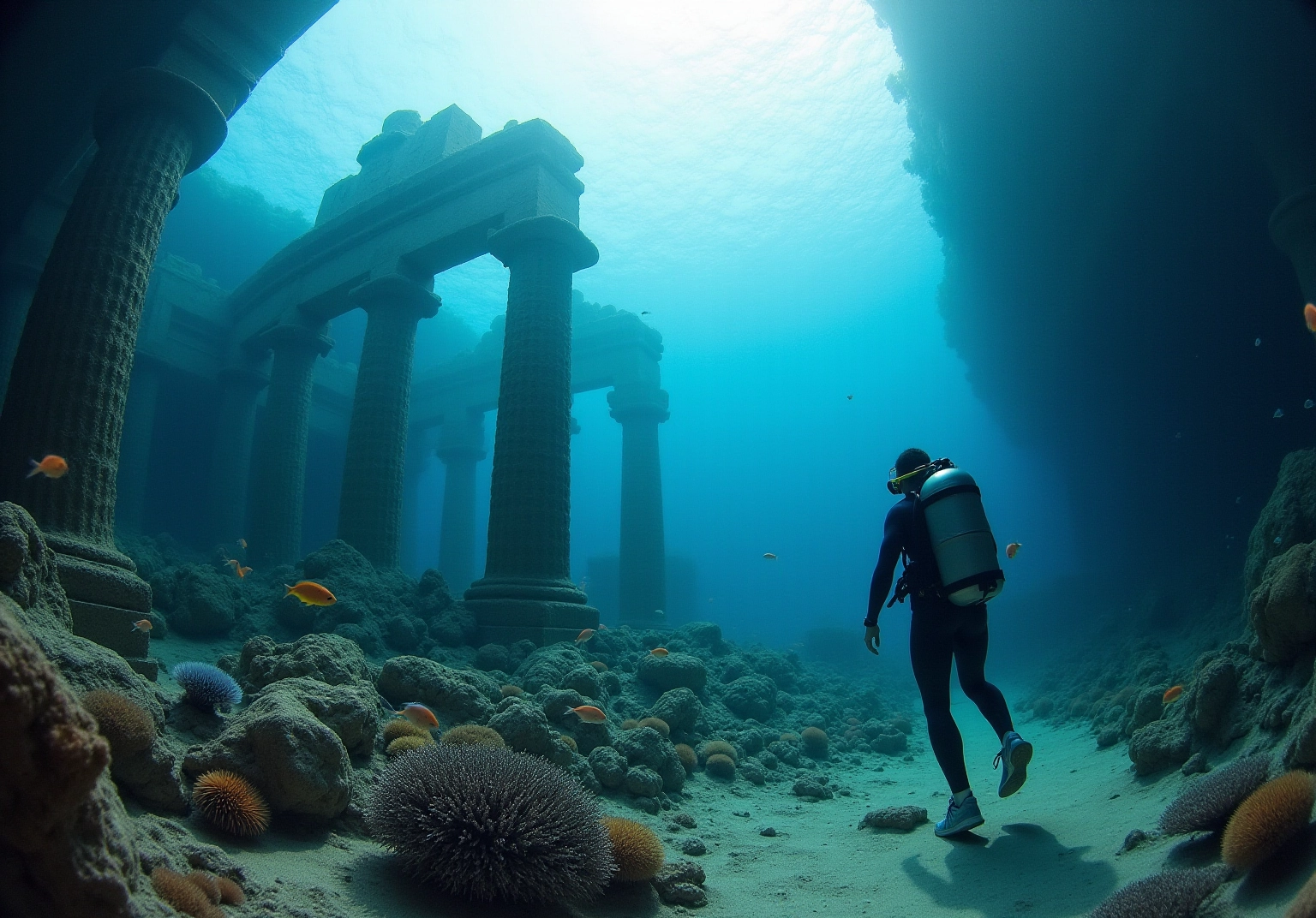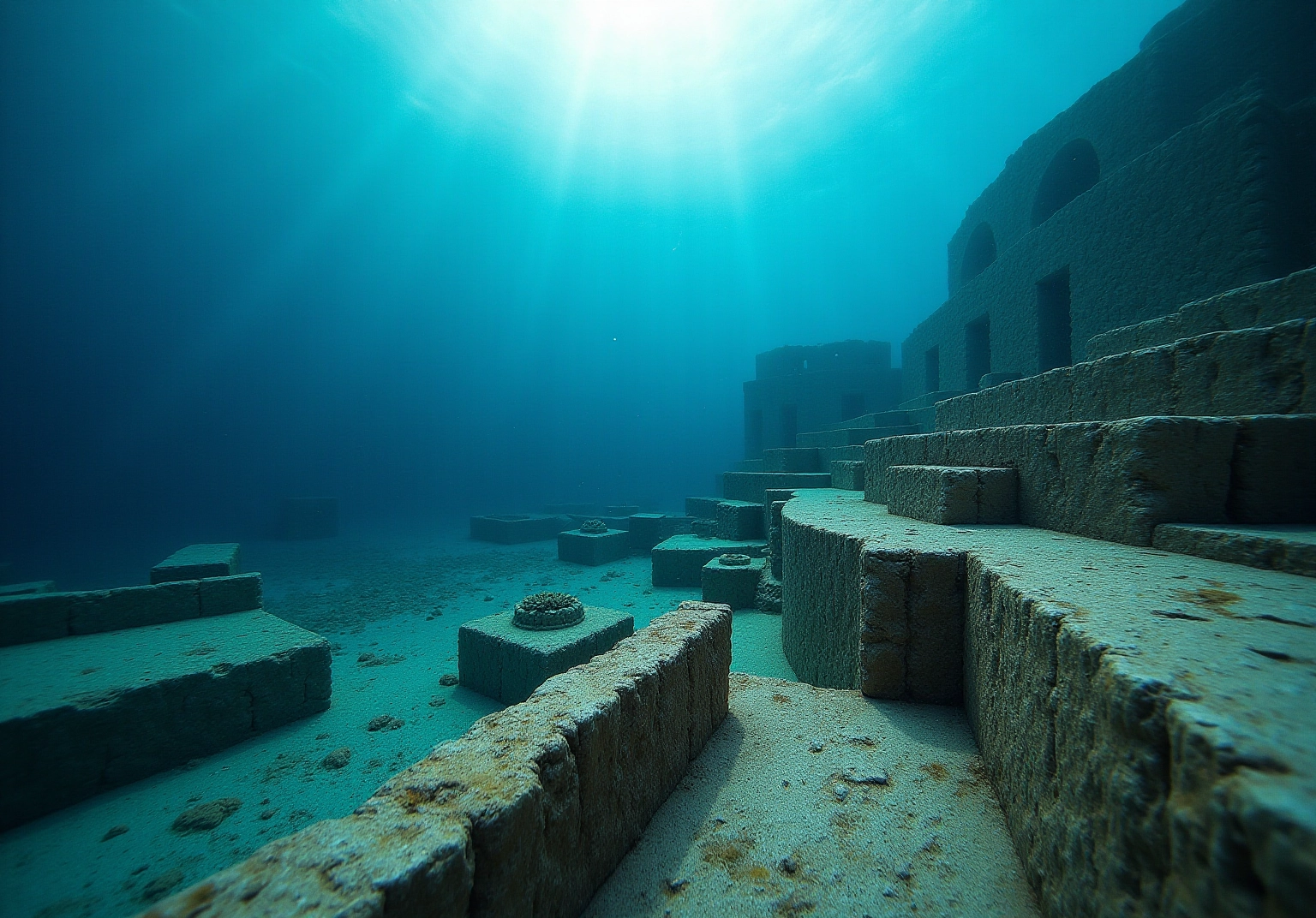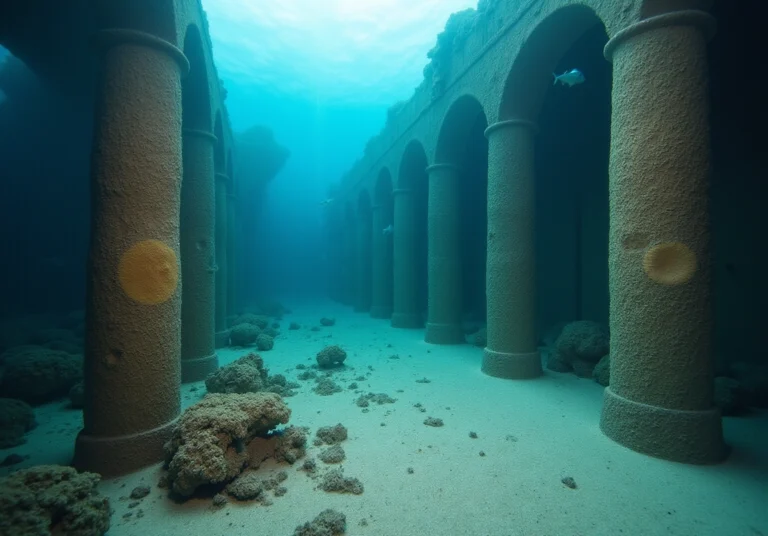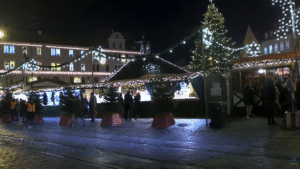Overview
Have you ever imagined exploring underwater cities? These incredible urban regions, submerged due to natural disasters or human actions, offer a glimpse into ancient civilizations. Picture this: Dwarka in India and Baiae in Italy, both rich in history and culture, waiting to be discovered!
What’s truly exciting is how underwater archaeology reveals fascinating cultural practices and technologies! It’s like peering through a window into the past. However, there’s a pressing need for preservation efforts, especially with environmental threats like rising sea levels impacting around 30% of these mesmerizing sites.
So, if you’re curious about diving into this adventure, let’s keep these underwater treasures safe for future explorers like you and me!
Key Highlights:
- Underwater cities are urban regions submerged beneath bodies of water due to natural events or human actions.
- Examples include Dwarka in India, Baiae in Italy, and Heracleion in Egypt, each with rich historical backgrounds.
- Dwarka is believed to have been drowned by a catastrophic flood around 1500 BCE.
- Baiae has been underwater for nearly 2,000 years due to volcanic activity and land sinking.
- Underwater archaeology reveals insights into ancient societies, their technologies, and cultural practises.
- Environmental changes, like rising sea levels, threaten the preservation of these sites, with 30% showing signs of decline.
- Marine archaeologists advocate for innovative preservation techniques to protect underwater cultural heritage.
- The 2001 Convention emphasises the importance of research and public awareness for the protection of underwater sites.
Introduction
Beneath the surface of our oceans and lakes lies a hidden world of submerged cities, each with its own story of triumph, tragedy, and transformation! Imagine uncovering these fascinating remnants of human civilization—from the legendary Atlantis to the ancient town of Dwarka. They reveal not only the architectural marvels of their time but also the profound impacts of environmental changes on urban life.
As climate change continues to threaten coastal areas, you might wonder: what lessons can these underwater cities teach us about resilience and adaptation in the face of adversity? Exploring these submerged landscapes offers a unique opportunity to uncover the rich history and cultural significance that lies beneath the waves. So, are you ready to dive into this adventure and discover what treasures await us below?
Define Underwater Cities: Characteristics and Examples
Fascinating urban regions known as cities found underwater lie beneath bodies of water, whether due to natural events, human actions, or even deliberate planning. Imagine exploring these submerged areas, where remnants of architecture, infrastructure, and artifacts offer a glimpse into the lives of those who once thrived there!
You might have heard of Atlantis, often considered a legend, but did you know about the actual sunken site of Dwarka in India? This remarkable place is thought to date back to 1500 BCE! Then there’s Baiae in Italy, famous for its luxurious villas and thermal baths, and the ancient town of Heracleion off the coast of Egypt, which has also been lost to time.
Let’s not forget Dunwich, which was once comparable in size to London! It faced destruction from severe storms, highlighting just how vulnerable coastal settlements can be. Another significant example is Rungholt, which succumbed to catastrophic flooding intensified by rising sea levels and storminess. The compelling story of human creativity and the impact of environmental changes on urban growth is told by these cities found underwater.
Recently, discoveries like the submerged ruins in Abu Qir Bay, Egypt, have sparked excitement among explorers! These structures date back thousands of years, and John T. Cull’s discovery of them in 1933 adds an authoritative context to the importance of these sites. And here’s a thought: some parts of New Orleans’ flood walls are sinking nearly two inches per year! This statistic reminds us of the ongoing risks urban areas face due to environmental change. So, are you ready to dive deeper into the mysteries of our underwater cities?

Explore the Historical Context: Origins of Underwater Cities
Have you ever wondered about the fascinating stories behind cities found underwater? Their origins can be traced back to a variety of historical events, from natural disasters to rising sea levels and even human actions! Take the town of Dwarka, for instance; it’s believed to have been drowned by a catastrophic flood. Then there’s Baiae, famous for its luxurious villas, which has been underwater for nearly 2,000 years due to volcanic activity and land sinking.
But that’s not all! Many of these submerged settlements, which are cities found underwater, are remnants of ancient societies that thrived in coastal areas before changing environmental factors forced them to abandon their homes. Exploring these underwater sites often involves underwater archaeology, where artifacts and structures reveal the rich cultural and social dynamics of the communities that once lived there. This historical context not only enriches our understanding of these fascinating places but also shows how human settlements adapt to their environments and the profound impacts of environmental change. Isn’t it incredible to think about how much history lies beneath the waves, just waiting to be discovered?

Understand the Significance: Cultural and Archaeological Importance of Underwater Cities
Have you ever imagined exploring cities found underwater? These incredible sites are treasure troves of cultural and archaeological importance, offering a rare glimpse into the lives of ancient civilizations and their interactions with the environment. You’ll find that these submerged locations often contain exceptionally preserved artifacts, structures, and organic materials that reveal ancient technologies, trade practices, and daily life. For instance, the sunken city of Heracleion has unveiled extensive insights into ancient Egyptian culture, shedding light on religious practices and economic activities that were previously unknown!
But the archaeological significance of these submerged urban locations goes beyond just historical study. They serve as poignant reminders of the vulnerability of human settlements in the face of climate change and rising sea levels. Recent research suggests that up to 30% of recognized aquatic archaeological locations globally are showing signs of rapid decline due to these environmental changes. This concerning trend highlights the urgency of protecting these sites, as they not only enhance our understanding of history but also contribute to current discussions on sustainability and environmental stewardship.
Marine archaeologists are calling for innovative preservation techniques, like photogrammetry and in situ conservation methods, to safeguard these invaluable resources. As Dr. Sarah Chen emphasizes, “The unparalleled deterioration of aquatic locations demands a proactive strategy for preservation, ensuring that future generations can access and learn from these historical gems.” The continuous exploration and documentation of cities found underwater not only deepen our appreciation of past societies but also foster a greater respect for the cultural narratives that these aquatic landscapes embody. Plus, advocating for submerged cultural heritage can serve as an economic resource for local tourism, helping to preserve archaeological sites.
The 2001 Convention highlights the importance of research, information, and education for the protection of underwater cultural heritage, emphasizing the need for public awareness to cultivate appreciation and protection of these remarkable sites. So, are you ready to dive into this fascinating world and discover the stories waiting to be uncovered?

Conclusion
Exploring underwater cities reveals a captivating story about the resilience and vulnerability of human civilization. These submerged urban landscapes, whether lost to natural disasters, environmental shifts, or human actions, offer a unique perspective on the intricate relationship between societies and their environments. By diving into the origins and significance of these cities, you gain insight into the complexities of human adaptation and the profound lessons they hold for contemporary urban planning and environmental stewardship.
As we journey through this topic, key examples like Dwarka, Baiae, and Heracleion showcase the rich historical contexts of these underwater sites. Each city tells its own tale of cultural heritage and technological advancement, while also reminding us of the impacts of climate change and rising sea levels on human settlements. The archaeological findings from these locations not only deepen our understanding of ancient civilizations but also highlight the urgent need for preservation efforts amidst ongoing environmental challenges.
Reflecting on the significance of underwater cities reveals their dual role as repositories of history and symbols of our environmental responsibilities. As the world grapples with the realities of climate change, the stories embedded in these submerged sites encourage us to take proactive steps to safeguard cultural heritage. Engaging with underwater archaeology not only fosters appreciation for our shared history but also inspires action to protect these invaluable resources for future generations. The call to explore, understand, and preserve these underwater treasures is more than just an invitation to uncover the past—it’s a vital step toward ensuring a sustainable future!
Frequently Asked Questions
What are underwater cities?
Underwater cities are urban regions that lie beneath bodies of water, which may have sunk due to natural events, human actions, or deliberate planning.
Can you give examples of underwater cities?
Examples of underwater cities include Dwarka in India, Baiae in Italy, Heracleion off the coast of Egypt, Dunwich in England, and Rungholt, which all have fascinating histories tied to their submersion.
What is the historical significance of Dwarka?
Dwarka is thought to date back to 1500 BCE and is one of the most notable sunken sites, with remnants that provide insight into ancient civilization.
What was Baiae known for?
Baiae was famous for its luxurious villas and thermal baths, showcasing the opulence of its past before it was submerged.
What happened to the town of Dunwich?
Dunwich was once comparable in size to London but faced destruction from severe storms, highlighting the vulnerability of coastal settlements.
What caused the submersion of Rungholt?
Rungholt succumbed to catastrophic flooding, which was intensified by rising sea levels and storminess.
What recent discoveries have been made related to underwater cities?
Recent discoveries include submerged ruins in Abu Qir Bay, Egypt, which date back thousands of years and were discovered by John T. Cull in 1933.
What ongoing risks do urban areas face related to environmental change?
Urban areas, such as New Orleans, face risks from environmental change, with some flood walls sinking nearly two inches per year, indicating the ongoing threat of rising sea levels and storms.


































